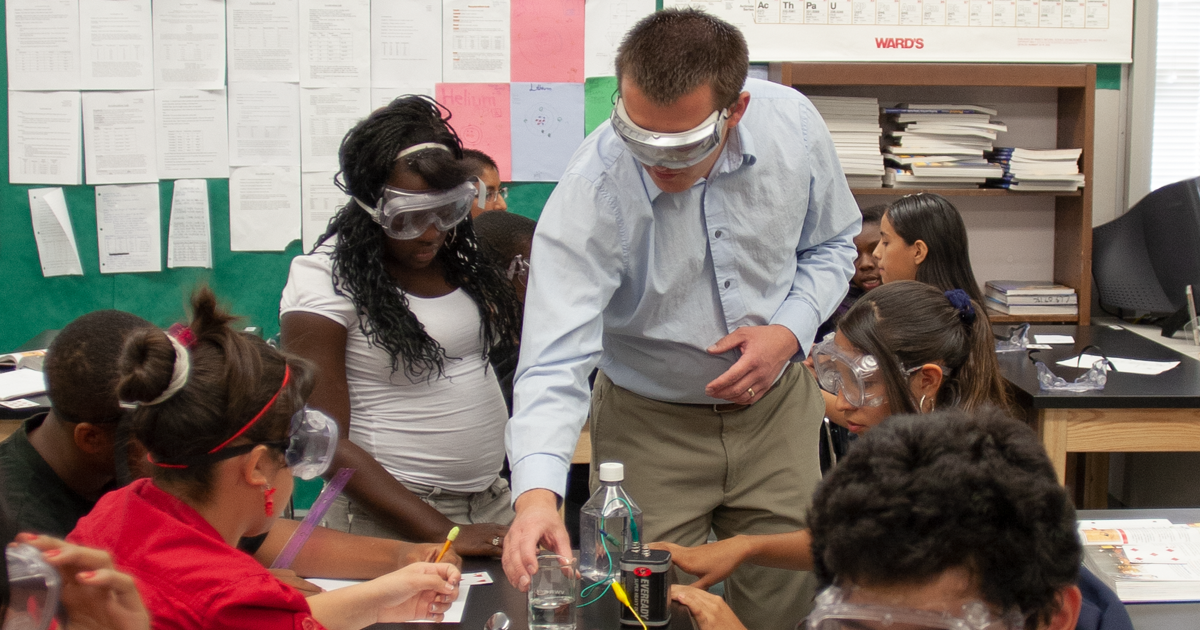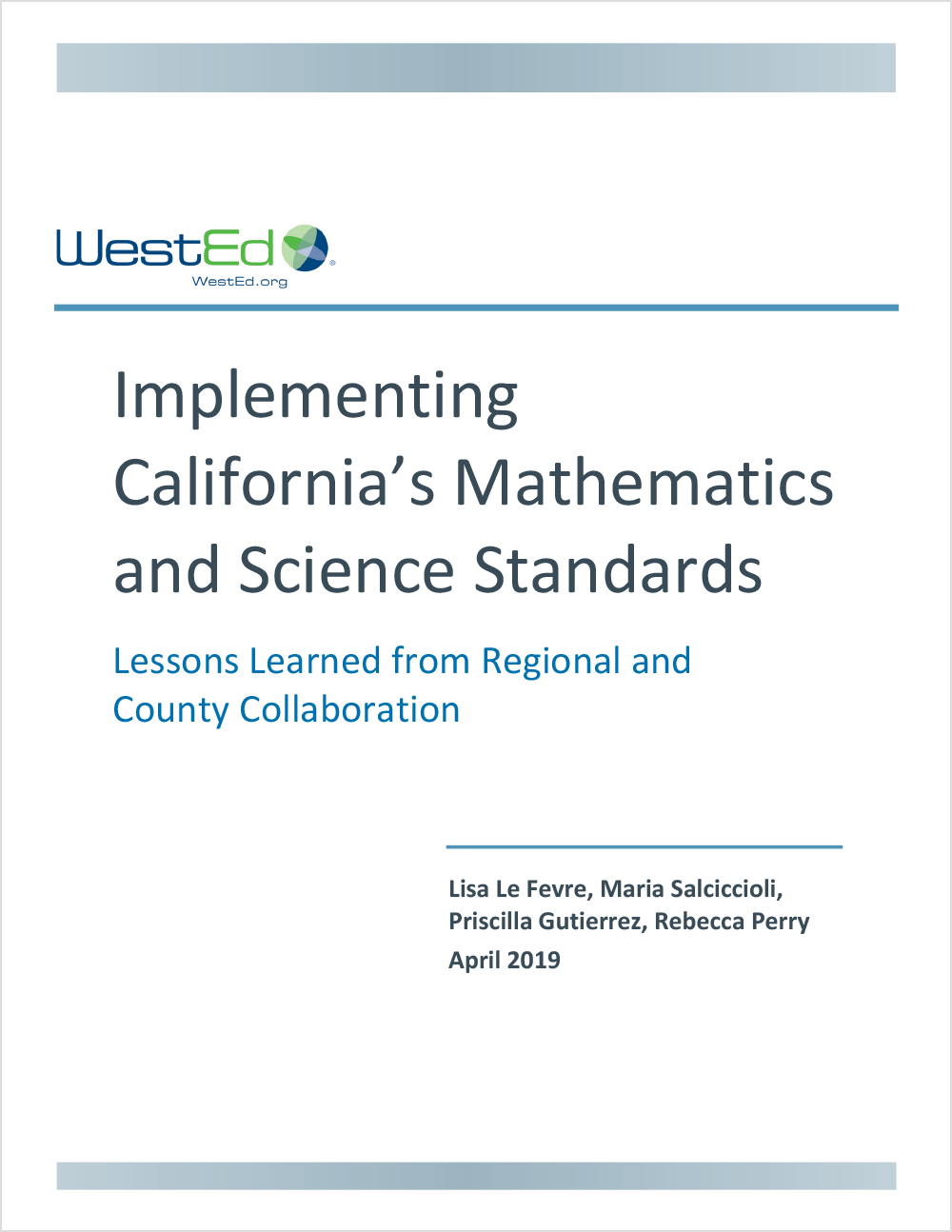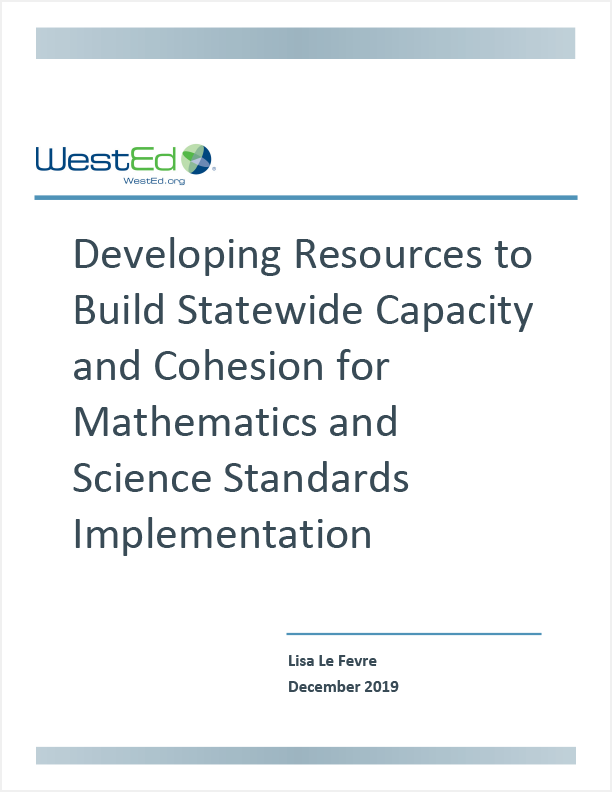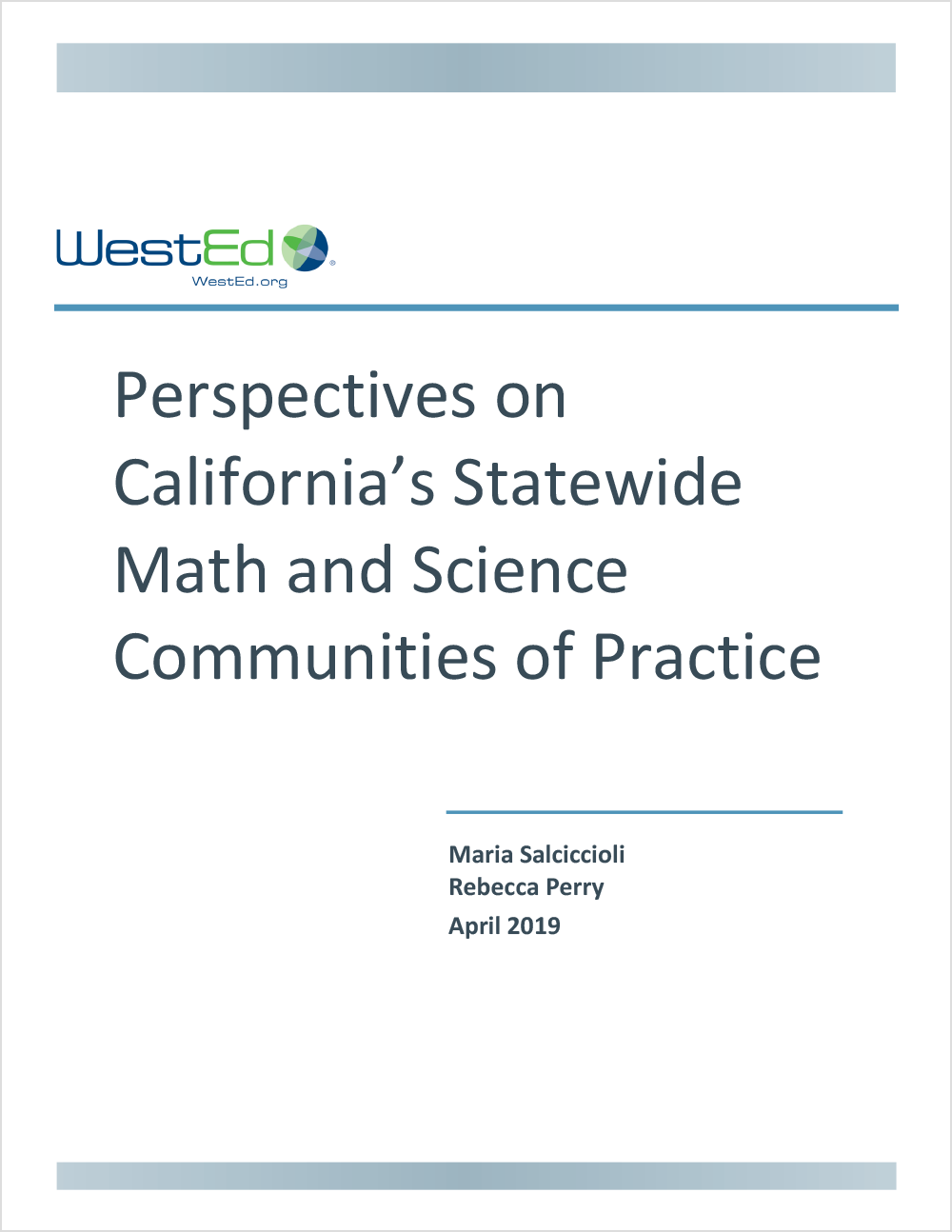The Value of Statewide Communities of Practice in Math and Science Education
Posted on

When COVID-19 shut down schools in 2020, the transition to virtual learning didn’t come easy. Most classroom teachers had never taught via online video, and providing the kinds of professional learning and logistical support needed for that transition was also new territory for many education leaders.
In California, however, two communities of practice — one of math experts and the other of science experts — quickly mobilized to create a collection of online resources to keep the pandemic from stalling the critical task of providing equitable, high-quality instruction for all students. Whether a third-grade teacher needed an online lesson on fractions, or a district team needed training on how to select materials aligned with the Next Generation Science Standards (NGSS), the communities provided resources and guidance to bolster math and science education statewide.
These two communities of practice have been underway since 2015 and represent expertise from across the state, including curriculum and instructional leaders from all of the state’s 58 county offices of education. When the pandemic hit, they pooled their members’ time and energy to make sure K–8 teachers continued to have access to strong math and science lessons whether teaching in person, remotely, or in a hybrid model.
“There’s no way that one county office or even a couple could have accomplished that,” says Nathan Inouye, science coordinator for the Ventura County Office of Education. County personnel are often unaware of what their counterparts across the state are doing, so to reach the level of collaboration needed for developing and providing effective resources statewide, they had to build relationships with each other over time.
Collaboration brings coherent implementation and equitable access to support
Subject matter leaders from across the state began developing those relationships when the S.D. Bechtel, Jr. Foundation first funded California’s math and science communities of practice in 2015. Bechtel also funded a group of education leaders that came to be known as the California Partnership for Math and Science Education (CAPMSE) to manage the communities. The project was initially driven by a desire to develop capacity for county office of education staff and thereby reduce variation in how they provided support to districts and schools implementing the Common Core math standards and the NGSS.
When the state adopted the NGSS, “one of the concerns was how we share with educators consistent messaging and coherent implementation,” Inouye says. “If we’ve learned anything from the past, it’s that everybody is going to be doing the best that they can, but they are doing it in isolation.”
As one county office administrator, who oversees both math and science, says, “I can’t support my county on my own, it’s too great of a lift…. If we want to have equitable access to quality support within every county, we need to collaborate.”
If we want to have equitable access to quality support within every county, we need to collaborate.
Statewide meetings of each community are the central means by which members collaborate and develop their expertise. Each community held three in-person meetings annually from 2016 through 2019, switching to online during the pandemic. The meetings typically have had a keynote speaker to share research or resources of statewide relevance and opportunities for members to discuss regional concerns. Often they also include hands-on collaborative experiences to engage members in recommended strategies introduced by the presenter. As the members expand their own capacity, they activate their growing knowledge base to support similar knowledge development for other educators within their region and subject matter. They share resources and help colleagues establish the systems, professional learning, and other supports needed to ensure that classroom teachers are able to provide high-quality standards-based instruction in math or science education.
As Rebecca Perry, a senior program associate at WestEd, puts it, “Now somebody from Stanislaus County can call someone from San Diego County and ask, ‘What are you doing and how is it working?’”
Based on the expertise and collaborations the communities had been building for years, when the pandemic hit in 2020, they were able to quickly develop online lesson resources, organize local improvement projects, and initiate online consultancies to support math and science educators statewide in adapting to the new conditions.
Having broad representation at the table deepens everyone’s expertise
After being founded to build capacity within county offices of education, the communities of practice soon added more members to also include representatives of school districts, subject matter groups, and other organizations such as museums, advocacy groups, universities, and teacher unions. Each community currently includes about 150 members representing the full range of entities in the state that in some way are involved in math or science education.
Bringing in such a wide range of perspectives was intentional. To address needs in a comprehensive way, “it’s important to think about who is at the table,” Perry says.
The members have expanded their expertise and perspectives not only by connecting with each other but also by bringing in experts from many quarters. WestEd helped guide CAPMSE in its formation and then through serving as CAPMSE’s external evaluator, providing formative data on progress to help the network improve over time. WestEd has participated in all of the group’s convenings and actively supported its development.
David Chun, director of K–12 mathematics at the Sacramento County Office of Education says, “WestEd brings expertise and research, and they bring a lens that is broader in most cases than my role at the county office.” Inouye adds that WestEd’s researchers have been able to capture how the initiative has evolved over time, noting that in education, “it is important not just to produce new things but to measure them, to document the journey and growth.”
WestEd’s evaluation has included providing feedback for CAPMSE and the communities of practice, interviewing members about their experiences, and documenting each community’s efforts, leading to several published reports on the work and accomplishments.
Professional learning helps educators develop equity-informed classroom practices
Nearly a decade since California adopted the Common Core standards, the need for CAPMSE has only grown more significant. With data consistently showing gaps in academic proficiency along racial and socioeconomic lines, the communities of practice have targeted much of their work in recent years on ensuring that all students have equal access to strong instruction and the courses that will set them on a path toward higher education.
According to research, 67 percent of Asian students and 45 percent of White students take Algebra I, a key gateway course, in eighth grade — compared with only 20 percent of Black students. And even if Black students take a higher-level math course in middle school, they are less likely than their White or Asian peers to advance to the highest-level courses in high school.
“For lack of a better term, there is tracking that occurs early on in districts. Many acknowledge that it’s a problem, but they don’t know how to shift away from it,” says Chun, adding that parents and school board members can be especially resistant to changes they think will limit rather than expand opportunities for students.
California’s Math Community of Practice, therefore, has supported professional learning that engages educators in, for example, integrating students’ cultural backgrounds and experiences into their math lessons and helping educators learn how to tackle math problems from the perspective of English learners.
One county office math administrator describes the CAPMSE events as a place to “feel safe,” adding, “I have become an advocate for this work and feel a drive to continue to learn and grow and make an impact to support all of our students in rich math experiences.”
As California is considering a new equity-focused math framework which would, among other changes, favor more heterogeneous grouping in math, district and school leaders who are already comfortable with strategies supporting students at different performance levels are a resource for their colleagues. Chun, who often coaches educators and co-teaches in the classroom, has already seen tangible evidence of CAPMSE’s helping educators learn how best to support heterogeneous grouping and mathematical discussion. “Students are engaged in more dialogue and explanation,” even in groups of varied ability levels, he says.
The pandemic’s more severe impact on students in poverty and students of color only reinforces the need for educators to focus on equitable teaching and learning. That emphasis has been evident in the work of CAPMSE’s Science Community of Practice. Priorities have included integrating science education goals into districts’ Local Control and Accountability Plans, supporting rural educators, and helping teachers incorporate more student voices in the classroom.
Positioning for the future
The science-focused community is also thinking beyond classroom practice and advocating for the importance of the content area. Its members want to see science added to the California Dashboard — the online site for the public to view school-level performance, disaggregated by race, family income, and English learner status. And Inouye says they want to avoid “unintended consequences” during future school disruptions, such as schools narrowing their focus to only reading and math, leaving science behind.
The recovery ahead, he adds, calls for a long-term commitment and WestEd’s ongoing expertise in guiding and measuring CAPMSE’s impact across the state. And as Chun says, “I’ve observed a common pandemic response of ‘We need to fix this immediately.’ But I don’t believe that’s the right approach. This really needs to be a three- to five-year plan.”
To the extent that any such plan includes the math and science statewide communities of practice, there will be more opportunities for educators and leaders to deepen bonds and forge new ones across regions, to learn together, and to solve additional challenges in order to better serve students throughout the state.



